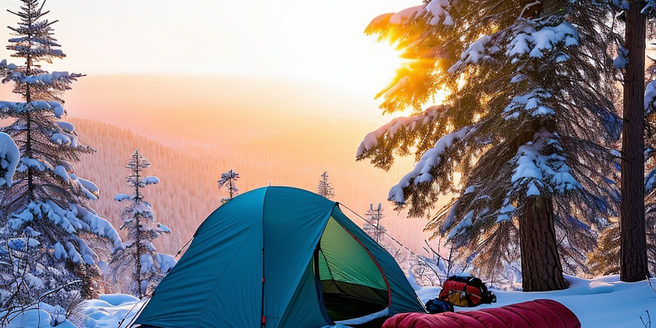
Essential Gear for Minimalist Winter Camping
When venturing out for minimalist winter camping, prioritizing lightweight, versatile gear is crucial. Start with a four-season tent that can withstand harsh winds and snow. Opt for a compact, sub-zero sleeping bag paired with an insulated sleeping pad for added warmth. A multi-functional tool and stove can significantly reduce the number of items you need to carry. Choose a layering system of merino wool and synthetic fibers to manage moisture and temperature. Don’t forget a reliable headlamp, maps, and a compass, as relying on electronic devices is risky in extreme cold conditions. Lightweight but hearty food supplies, such as dehydrated meals, should be well-calculated. Water purification methods should be considered, like a filter or purification tablets, due to potential freezing of supplies.
Choosing the Right Campsite for Winter
Finding the perfect winter campsite is about balancing safety and comfort. Consider accessibility to emergency services in case of unexpected weather conditions. Select a location sheltered from strong winds, such as behind natural windbreaks like trees or large boulders. Avoid camping directly under heavy snow-laden branches to prevent potential accidents due to falling snow. Assess the avalanche risk if camping in mountainous areas by checking local reports and choosing low-risk zones. Proximity to a water source can be convenient but ensure it won’t freeze overnight or be prone to flooding. A well-trampled snow area makes for a more solid base, providing better insulation and stability for your tent. Always be mindful of wildlife habitats and follow leave-no-trace principles to protect the environment.
Layering Techniques to Stay Warm
Layering is the key to maintaining warmth and comfort while minimalist winter camping. Start with a moisture-wicking base layer to keep perspiration away from your skin. A middle insulating layer, like down or fleece, should trap heat. It’s important to choose materials that will dry quickly in case they get wet. Opt for breathable and lightweight insulation to prevent overheating. Finish with a waterproof and windproof outer shell to protect against the elements. Accessories such as hats, gloves, and warm socks are essential; remember, much heat is lost through extremities. Adjust layers based on activity levels, adding or removing layers as needed to regulate body temperature. Packing additional layers is advisable in case of unexpected temperature drops.
Simple and Nutritious Winter Camp Meals
Eating nutrient-dense meals is vital to maintaining energy while winter camping. Focus on simple yet filling foods that require minimal prep and cooking time. Oatmeal, dried fruits, and nuts make for a hearty breakfast. Instant noodles can be enhanced by adding dehydrated vegetables or protein sources for a quick lunch. For dinner, pack dehydrated meals that only require boiling water. Soups and stews are excellent for warmth and nourishment. Remember to stay hydrated as well, as cold weather can disguise signs of thirst. Pack spices to enhance flavors without added bulk. Energy bars and chocolate are great for snacks, offering quick energy boosts. Always aim to pack out what you pack in, maintaining a minimal footprint while fully nourishing your body.
Safety Tips for Minimalist Winter Adventures
Embarking on a minimalist winter camping adventure requires keen attention to safety. Begin by familiarizing yourself with the terrain and weather conditions of your intended location. Carry a first-aid kit tailored for winter-specific injuries such as frostbite and hypothermia. Always inform someone about your expected route and return time. Be cautious of shorter daylight hours; plan your activities and set up camp accordingly to avoid nighttime falls in temperatures. Recognize and heed symptoms of hypothermia and frostbite immediately. Pack a whistle and mirror for signaling in emergency situations. Ensure you have knowledge of basic layering and shelter building techniques to cope with sudden weather changes. Thorough preparation and respect for the powerful winter elements are critical for a safe and enjoyable experience.
